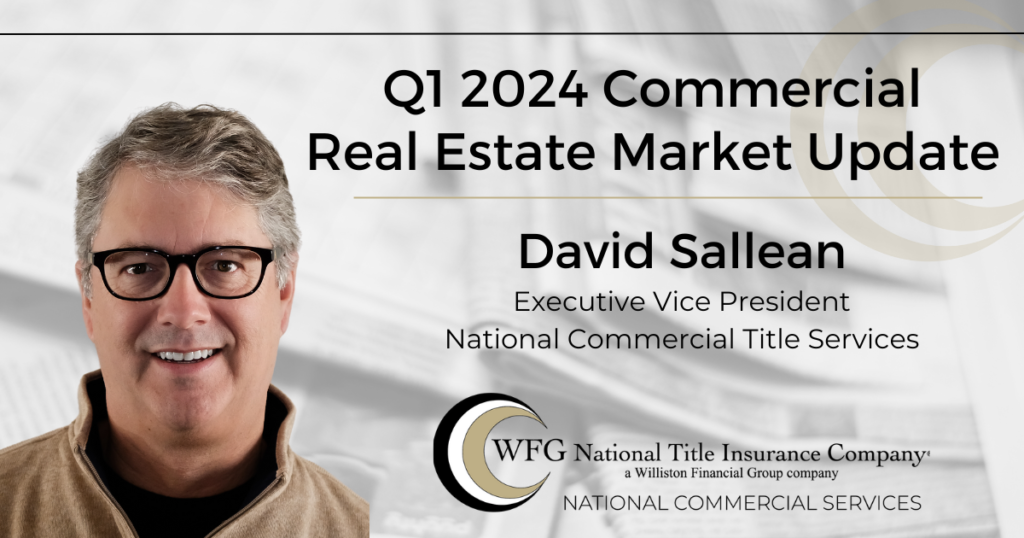
Sailors around the world know of the inter-tropical convergence zone, an area near the equator where the northeast and southeast trade winds converge, where sailing ships get stuck in windless waters. This is known in nautical terms as the doldrums.
Transaction volume for commercial real estate was significantly down in 2023 and below the last 10-year average. According to CoStar, those volumes continue to be depressed, with a 56% decrease in year-over-year activity to a 14-year low of $35 billion for Q1 of 2024. Interest rates are still putting downward pressure on valuation multiples for real estate and office markets are continuing to see high vacancy rates. However, looking forward, we continue to see opportunity on the horizon. Borrowing costs are down from their Q4 highs and transaction activity is continuing to pick up. According to CoStar, “the early months of 2024 saw a significant shift in the market dynamics, with owner-users overtaking private buyers as the primary buyers of large office developments. This change marks a departure from the trend since mid-2022, where private buyers led acquisitions as REITs and institutional investors reduced their exposure.”
What we are seeing is a once-in-a-lifetime investing opportunity, a buying opportunity for distressed assets at reduced prices. There is an abundance of dry powder, as funds have raised significant capital to take advantage of these opportunities. Some recent examples include 1101 Vermont Ave., a downtown DC office building which sold for $16 million. It was most recently traded in 2006 for $60 million and valued in 2018 for $72 million. And the 12-story office building on 300 W. Adams St. in Chicago, IL sold for $4 million. The property last sold in 2012 for $51 million.
Looking at data center development, we see it attracting more institutional investment as an alternative to more traditional office sector real estate. Data Centers are a fast growing asset class with low vacancy, strong rent growth and 10 times the demand from five years ago. This is part of the overall AI revolution and big tech companies have announced large investments in digital infrastructure that will drive more demand for data centers. And it shows no signs of slowing. Most of the capacity that is coming online this year is preleased, while cities like Salt Lake City, UT and Atlanta, GA are the fastest growing data center markets.
So, while we might have been in the doldrums in the first quarter of 2024, there are winds on the horizon that will inevitably fill our sails.